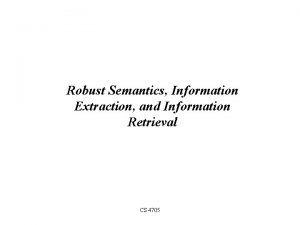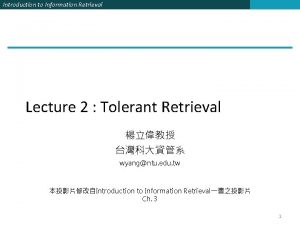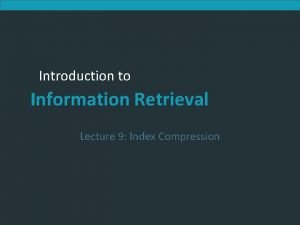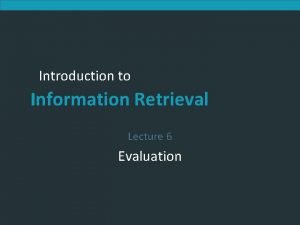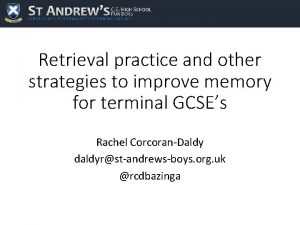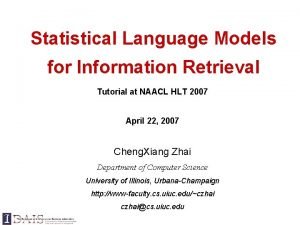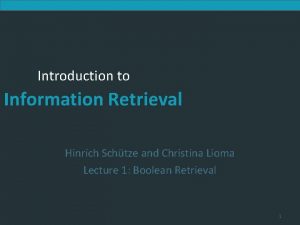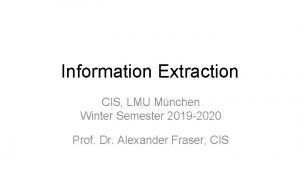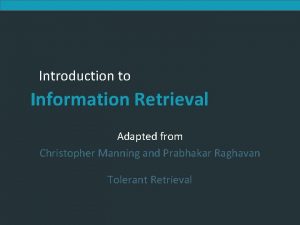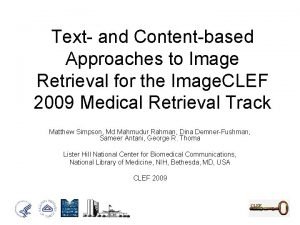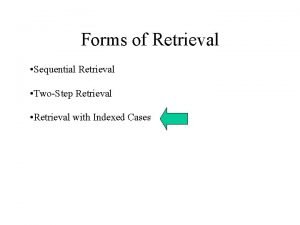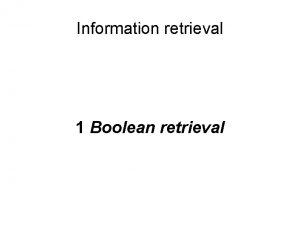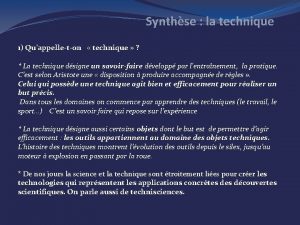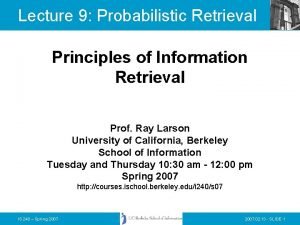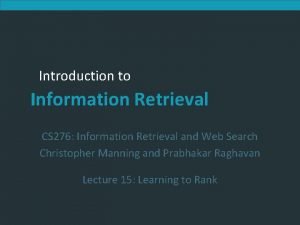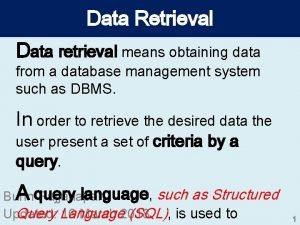SPLITWINDOW TECHNIQUE SPLITWINDOW TECHNIQUE l It is retrieval












- Slides: 12

SPLIT-WINDOW TECHNIQUE

SPLIT-WINDOW TECHNIQUE l It is retrieval scheme which attempt to correct the signal from the surface. l Some meteorologically important quantities, such as sea and land surface temperatures, are properties of the surface. l To retrieve them, atmospheric modification of the upwelling radiation must be corrected. l An extremely important technique used in many of these schemes is the so called split-window technique.

SPLIT-WINDOW TECHNIQUE l Surface observations are made in atmospheric windows. However, these windows are dirty; that is, the radiance leaving the surface is modified by the atmosphere. l For IR windows, the radiative transfer equation can be written as L = B (TS) 0( ) + B (TA) [1 - 0( )] Where 0( ) is the transmittance from the surface to the satellite at wavelength , TS is the surface brightness (equivalent blackbody) temperature, and TA is the mean brightness temperature of the atmosphere given by 1 B (TA) = 1/(1 - 0( ) ) =0∫ B (T) d

SPLIT-WINDOW TECHNIQUE Some windows, particularly the 10. 5 – 12. 5 m window, are wide enough to permit observations in two channels. The split-window technique uses observations at two wavelengths to eliminate the influence of TA and solve for TS. l Suppose that radiances at two wavelengths 1 and 2 are measured. Then L 1 = B 1(TB 1) = B 1(TS) 1+ B 1(TA) [1 - 1] l L 2 = B 2(TB 2) = B 2(TS) 2+ B 2(TA) [1 - 2] Where the subscripts 1 & 2 indicate wavelength, TB is a brightness temperature (equivalent blackbody temperature), and is understood to mean 0.

SPLIT-WINDOW TECHNIQUE l If the two wavelengths are close together, we can expect three things: The weighting functions in the two channels will be similar, and therefore TA will be same in both equations. In the 10. 5 – 12. 5 m window, TA varies by less than 1 k. The surface emittance and thus TS will also be the same in each equation. Difference in transmittance will be the result of differences in the absorption coefficient of the same absorbing gas. In 10. 5 – 12. 5 m window, water vapour is the chief absorber.

SPLIT-WINDOW TECHNIQUE l If U is the column-integrated water vapour (the precipitable water), then exp [- (U/ )] L 1 = B 1(TB 1) = B 1(TS) 1+ B 1(TA) [1 - 1] …………* L 2 = B 2(TB 2) = B 2(TS) 2+ B 2(TA) [1 - 2] …………** l Given measurements of L 1 and L 2, the equations appears to constitute two equations in three unknowns; TA, TS, and U. It will turn out, however, that because the optical depth is small, eliminating TA also eliminates U.

SPLIT-WINDOW TECHNIQUE l The split-window technique can be used directly to obtain TS, but not U, from satellite measurements at two wavelengths. U can be retrieved, however, if an independent estimate of TA is available. l To solve the equations for T S, the wavelength dependence must be eliminated. Since the weighting functions peak at the surface, TS, TB 1 and TB 2 will be close to TA. Expanding the plank functions about TA; B (T) B (TA) + B / T (T - TA) Where partial derivative is evaluated at T = TA.

SPLIT-WINDOW TECHNIQUE l Writing this equation for each wavelength and eliminating T - TA between two equations yields an equation that relates radiance changes at one wavelength to radiance changes at the other: B 2(T) B 2(TA) + [( B 2/ T) / ( B 1/ T)] {(B 1(T) – B 1(TA)} l Using equation to approximate B 2(TB 2) and B 2(TS) yields ** B 1(TB 2) = B 1(TS) 2 + B 1(TA) (1 - 2) l Finally, eliminating B 1(TA), the split-window equation becomes: B 1(TS) = B 1(TB 1) + [B 1(TB 1) - B 1(TB 2)], where =(1 - 1)/( 1 - 2)

SPLIT-WINDOW TECHNIQUE l By approximating the plank function as locally linear, a slightly less accurate but more popular form of the splitwindow equation can be derived: TS = TB 1 + [TB 1 – TB 2] l Two important points must be made about the split-window equation.

SPLIT-WINDOW TECHNIQUE l First, the split window technique is a correction technique. The difference between observations at two wavelengths is used to correct one of the observations for the atmospheric effects to yield an improved estimate of surface radiance or temperature. l Second, the factor does not depend on the amount of absorber U. Since the transmittance is relatively large in atmospheric windows, equation can be approximated as 2 1 - (U/ ); and, therefore 1 / ( 2 - 1)

SPLIT-WINDOW TECHNIQUE l IF AVHRR Channel 4 (11 m) & 5 (12 m) are used for the first and second wavelengths, respectively, then 3. ( is positive because channel 5 is more sensitive to water vapour than channel 4. ) l Channels in separate windows, ( for example, the 3. 7 and the 10. 5 – 12. 5 m windows), which are both clouded by the same gas can be used to estimate surface temperature, but one should not expect the equation to take the exact form of the split-window equation. l In general, the surface temperature will be a linear combination of the measured brightness temperatures plus a constant term.

SPLIT-WINDOW TECHNIQUE l When channels in different windows are used, the technique is referred to as multiple-window technique. l In practice the split-window technique is rarely used directly. Rather, it provides theoretical justification for regressing the surface temperature of interest against measured or simulated brightness temperatures.
 Information retrieval
Information retrieval Information retrieval architecture
Information retrieval architecture Levenshtein distance for oslo-snow
Levenshtein distance for oslo-snow Relevance information retrieval
Relevance information retrieval Index compression in information retrieval
Index compression in information retrieval Normalized discounted cumulative gain
Normalized discounted cumulative gain Retrieval practice
Retrieval practice Statistical language models for information retrieval
Statistical language models for information retrieval Boolean model information retrieval example
Boolean model information retrieval example Information retrieval lmu
Information retrieval lmu Introduction to information retrieval manning
Introduction to information retrieval manning Information retrieval data structures and algorithms
Information retrieval data structures and algorithms Text based image retrieval
Text based image retrieval
